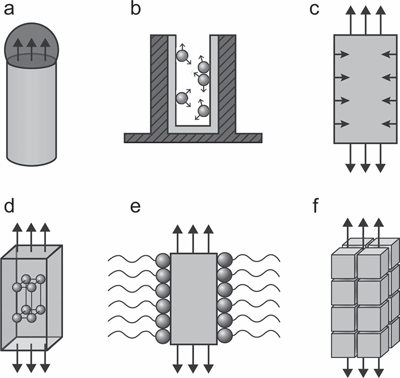...
High quality ceramic powders are the basis for all further ceramics processing and we have over the last decades developed powder processing routes mainly based on wet chemical synthesis. To prepare the further ceramic bodies, consolidation is based on pressing, colloidal processing including tape casting as well as plastic shaping methods like extrusion. Central in our activities for a long time has also been the understanding of sintering and microstructural development during ceramics processing and later on also the preparation of highly textured materials. Nanocrystalline ceramics are developed using hot pressing and spark plasma sintering.
Our materials synthesis program includes: sol-gel synthesis, spray pyrolysis, hydrothermal synthesis, molten salt synthesis, combustion and chemical solution deposition. Nanostructured materials include the development of synthesis routes for nanoparticles, nanorods and tubes, hierarchical structures and composite materials.
The clean room and laboratory facilities at NTNU NanoLab are central in our materials synthesis work. The spin-off company CerPoTech was established in october 2007.
The main activities include:
- Oxide powder processing
- Hydrothermal and molten salt synthesis of well-defined oxide particles
- Colloidal processing of asymmetric membranes
- Development of templates and texturing of ceramic materials
- Oxide films by chemical solution deposition
- Development of nanostructured materials and nanocrystalline ceramics.
- Si nanoparticles by homogeneous solution based reactions.
SEM of powder and sintered ceramic, and a spray pyrolysis furnace.
Dense membrane on a porous support, Vanesa Gil.
Methods for growing one-dimensional nanostructures.
Epitaxial, ordered PbTiO3 nanorods grown hydrothermally on SrTiO3.
Contact person Pei Na Kui



